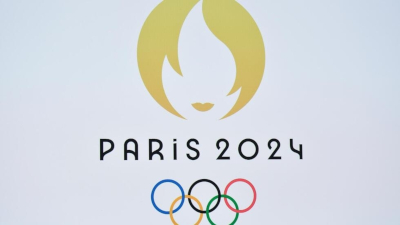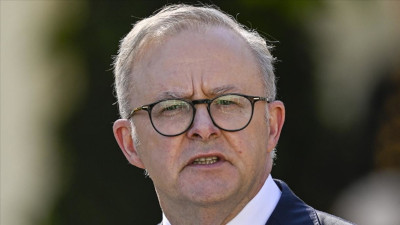The President and the Vice President believe that healthcare is a right, not a privilege. The Administration’s actions to protect and expand Americans’ access to quality, affordable healthcare have made a positive difference for Americans’ well-being and wallets. The Administration continues to build on, strengthen, and protect Medicare, Medicaid, and the Affordable Care Act (ACA)—and now more Americans have health insurance than under any other President.
Since taking office, the President has delivered the resources necessary to end the COVID emergency; built on the success of the ACA to further close the uninsured gap; reduced Americans’ healthcare premiums and prescription drug costs; finally allowed Medicare to negotiate for lower prescription drug prices and taken on Big Pharma; acted to protect millions of consumers from surprise medical bills and junk fees; made progress on bold new goals as part of the Biden Cancer Moonshot; released a national strategy to tackle the mental health crisis; and created new efforts dedicated to closing gaps in women’s health research and preventing, detecting, and treating devastating diseases like cancer and Alzheimer’s disease. The President signed into law the historic Inflation Reduction Act, which is helping millions of Americans save an average $800 per year on health insurance by extending the ACA enhanced premium tax credit. The historic legislation reduced the burden of high upfront out-of-pocket prescription drug costs for seniors and people with disabilities with Medicare—including by capping the cost of a month’s supply of insulin at $35 per insulin prescription—made certain recommended vaccines free, and is requiring drug companies to pay rebates to Medicare if they raise prices faster than inflation.
But Congressional Republicans have a different vision. Despite this progress and the overwhelming popularity of these advancements, extreme Republicans in Congress have blocked efforts to lower health care costs, and they’re still trying to end the Affordable Care Act. If the extreme Republicans in Congress get their way, millions of families would face skyrocketing healthcare and prescriptions costs, and potentially lose their health care altogether. And in the wake of the Supreme Court’s decision to overturn nearly 50 years of precedent in Roe v. Wade, Republican elected officials are advancing and enforcing dangerous, extreme abortion bans that eliminate women’s ability to make their own decisions about their health, force women to travel hundreds of miles for care, and deny access to vital, evidence-based medical care. And Congressional Republicans have proposed three national abortion bans that would limit access to reproductive health care in every state in the country.
The Administration recognizes that by investing in the health and well-being of the American people, we can create healthier, safer, and more productive communities. The Budget protects the progress this Administration has made while proposing additional investments to address the challenges that remain, including further expanding access to high-quality healthcare and lowering costs, responding to mental health needs, advancing health equity, honoring our sacred commitment to our veterans, and strengthening America’s public health infrastructure. The President’s Budget:
Expands Access to High-Quality Healthcare and Lowers Costs
Lowers Drug Prices and Expands Access to Prescription Drugs. Thanks to action taken by the Administration, millions of seniors and people with disabilities are saving money on their drug costs, and the Administration announced the first ten drugs for which prices will be negotiated as it continues implementation of the Inflation Reduction Act. The Budget builds on this success by significantly increasing the pace of negotiation, bringing more drugs into negotiation sooner after they launch, expanding the Inflation Reduction Act’s inflation rebates and $2,000 out-of-pocket prescription drug cost cap beyond Medicare and into the commercial market, and by taking other steps to build on the Inflation Reduction Act drug provisions. In addition, the Budget extends the $35 cost-sharing cap for a month’s supply of a covered insulin product to the commercial market. The Budget also includes proposals to ensure Medicaid and the Children’s Health Insurance Program (CHIP) are prudent purchasers of prescription drugs and limits Medicare Part D cost-sharing for high-value generic drugs, such as those used to treat hypertension and hyperlipidemia, to no more than $2 per month for Medicare beneficiaries. These reforms will not only cut costs for the Federal government by $200 billion; they will also save billions of dollars for seniors and people with disabilities.
Expands Access to Quality, Affordable Healthcare. With enrollment in Marketplace coverage at an all-time high, the Budget builds on the incredible success of the ACA by making permanent the expanded premium tax credits that the Inflation Reduction Act extended and providing Medicaid-like coverage to individuals in States that have not adopted Medicaid expansion, paired with financial incentives to ensure States maintain their existing expansions. For Medicaid and CHIP, the Budget allows States to extend the existing 12-month continuous eligibility for all children to 36 months, and allows States to provide continuous eligibility for children from birth until they turn age 6. Further, the Budget prohibits enrollment fees and premiums in CHIP. The President also supports eliminating Medicaid funding caps for Puerto Rico and other Territories while aligning their matching rate with States—and moving toward parity for other critical Federal programs including Supplemental Security Income and the Supplemental Nutrition Assistance Program. The Budget is also including an allowance to ban unwarranted “facility fees” for telehealth and certain other outpatient services in commercial insurance. In addition, the Budget includes funding for continued implementation of the No Surprises Act, which protects Americans across the Nation from surprise medical bills.
Protects and Strengthens Medicare and Medicaid. The Budget extends HI trust fund solvency indefinitely by modestly increasing the Medicare tax rate on incomes above $400,000, closing loopholes in existing Medicare taxes, and directing revenue from the Net Investment Income Tax into the HI Trust Fund as was originally intended. Current law lets certain wealthy business owners avoid Medicare taxes on some of the profits they get from passthrough businesses. The Budget closes this loophole and raises Medicare tax rates on earned and unearned income from 3.8 percent to 5 percent for those with incomes over $400,000. In addition, the Budget directs an amount equivalent to the savings from its proposed Medicare drug reforms into the HI trust fund. The Budget also proposes to limit the portion of Medicaid and CHIP managed care dollars spent on administration and incentivize more investments in quality healthcare services by requiring managed care plans to pay Medicaid back when they charge the program far more than they actually spend on patient care.
Advances Equitable Access to Home and Community-Based Care. The President recognizes thatmore than three-quarters of home and community-based care service providers are not accepting new clients, leaving hundreds of thousands of older Americans and Americans with disabilities on waiting lists for home and community-based services or struggling to afford the care they need.The Administration invested $25 billion in American Rescue Plan funds to help states strengthen their Medicaid home and community-based care programs, including over $9 billion in spending to boost wages for home care workers as well as improve overall job quality.The President’s Budget invests $150 billion over 10 years to improve and expand Medicaid home and community-based services, which would allow older Americans and people with disabilities to remain in their homes and stay active in their communities as well as improve the quality of jobs for home care workers.
Protects Seniors’ Health and Dignity. The Budget increases funding for senior nutrition services to ensure seniors continue to receive healthy meals by 8 percent above 2023 level, and 21 percent over 2021 levels. In addition, the Budget proposes to shift funding for nursing home surveys from discretionary to mandatory beginning in 2026, and increase funding to cover 100 percent of statutorily-mandated surveys, which will guard against negligent care and ensure that Americans receive high quality, safe services within these facilities. The Budget also continues to build on the President’s commitment to protect the Nation’s seniors and people with disabilities through a comprehensive agenda that improves the safety and quality of nursing home care, addresses the backlog of complaint surveys from nursing home residents, expands financial penalties for underperforming facilities, requires greater transparency of nursing facility ownership, and increases the inspection of facilities with serious safety deficiencies.
Transforms Behavioral Healthcare
Expands Coverage and Invests in Behavioral Healthcare Services. In 2022, almost a quarter of adults suffered from mental illness, 13 percent of adolescents had serious thoughts of suicide, and overdose deaths continued near record highs. As a core pillar of his Unity Agenda, the President released a national strategy to transform how we understand and address mental health in America—and the Budget makes progress on this agenda by improving access to care for individuals and communities. The Budget makes significant investments in expanding the 988 Suicide and Crisis Lifeline that is projected to respond to 7.5 million contacts from individuals in distress in 2025 alone. The Budget expands mental health care and support services in schools; expands CDC’s suicide prevention program to additional States, as well as Tribal and territorial jurisdictions; and invests in strengthening the behavioral health workforce – including through the integration of behavioral health services into primary care settings. The Budget also expands access to behavioral health services through significant investments in Certified Community Behavioral Health Clinics and Community Mental Health Centers. In addition, the Budget provides $1 billion to advance Health IT adoption and engagement in interoperability for certain behavioral health providers.
Strengthens Mental Health Parity Protections. The Budget requires all commercial market health plans to cover mental health and substance use disorder benefits, ensures that plans have an adequate network of behavioral health providers, and improves the Department of Labor’s (DOL) ability to enforce the law. In addition, the Budget includes $275 million over 10 years to increase the Department’s capacity to ensure that large group market health plans and issuers comply with mental health and substance use disorder requirements, and to take action against plans and issuers that do not comply.
Bolsters Mental Health Supports for All Students. The mental health of students, teachers, and school staff is essential to their overall well-being and continued academic recovery, and continues to be a high priority of the Administration, which has delivered an additional $2.1 billion to mental health programs for students since 2021. Research shows that students who receive social, emotional, and mental and behavioral supports have better outcomes, including faring better academically. The Budget provides a combined total of $216 million for mental health programs, including $200 million from the Bipartisan Safer Communities Act (BSCA), a 900 percent increase in program funding since 2021. The funds will help to increase the number of school-based counselors, psychologists, social workers, and other mental health professionals in K-12 schools.
Expands Access to Treatment for Substance Use Disorder and Invests in Overdose Prevention. The Administration has made historic advances in expanding access to treatment for opioid use disorder, including signing into law a bipartisan provision to expand the number of medical providers who can initiate treatment for opioid use disorder from 129,000 to nearly 2 million. The Budget increases funding for the State Opioid Response grant program, which has provided treatment services to over 1.2 million people and enabled States to reverse more than 500,000 overdoses with over 9 million purchased overdose reversal medication kits. The Budget also invests $713 million toward opioid use disorder prevention and treatment programs for veterans, as well as funding for a new technical assistance center to strengthen health providers’ understanding and treatment of women’s mental health and substance use.
Advances Health Equity
Closes Research Gaps in Women’s Health. The President and the First Lady launched the first-ever White House Initiative on Women’s Health Research, recognizing that women have been understudied and underrepresented in health research for far too long. The Initiative is working across Government to better integrate women’s health within the Federal research portfolio and catalyze significant private and philanthropic commitments to increase funding for women’s health research. The Budget would also double existing funding for the Office of Research on Women’s Health at the National Institutes of Health (NIH). These additional funds will allow NIH to support new and existing initiatives that emphasize women’s health research, such as research in menopause, heart health, and brain health. The Administration proposes to transform the way the Government funds women’s health research at NIH, including by creating a new nationwide network of centers of excellence and innovation in women’s health.
Supports Family Planning Services, Maternal Health, and Health Equity. Americans deserve access to the healthcare they need, including maternal healthcare, contraception, and family planning services, which are essential to ensuring control over personal decisions about their own health, lives, and families. The Budget includes $390 million, a 36 percent increase, for the Title X Family Planning program to increase the number of patients served to 3.6 million. The Budget builds on success securing a nearly 200 percent funding increase for key maternal health programs across HHS over the course of the Administration by including $376 million to support the ongoing implementation of the White House Blueprint for Addressing the Maternal Health Crisis to reduce maternal mortality and morbidity rates, and address the highest rates of perinatal health disparities.
Provides National, Comprehensive Paid Family and Medical Leave and Calls for Paid Sick Days. The vast majority of America’s workers do not have access to employer-provided paid family leave, including 73 percent of private sector workers. Among the lowest-paid workers, who are disproportionately women and people of color, 94 percent lack access to paid family leave through their employers. The Budget proposes to establish a national, comprehensive paid family and medical leave program administered by the Social Security Administration to ensure that all eligible workers can take up to 12 weeks to bond with a new child, care for a seriously ill loved one, heal from their own serious illness, address circumstances arising from a loved one’s military deployment, find safety from domestic violence, dating violence, sexual assault, or stalking—otherwise known as safe leave, or up to three days to grieve the death of a loved one. Further, the President continues to call on the Congress to require employers to provide seven job-protected paid sick days each year to all workers, and ensure that employers cannot penalize workers for taking time off to address their health needs, or the health needs of their families, or for safe leave.
Guarantees Adequate and Stable Funding for the Indian Health Service (IHS). The Administration is committed to upholding the United States’ trust and treaty responsibilities to Tribal Nations, including by addressing the historic chronic underfunding of IHS and fighting for IHS to be funded like the essential service that it is. The enactment of an advance appropriation for 2024 for IHS was a historic and welcome step toward the goal of eventually securing adequate and stable funding for IHS. This funding will provide needed improvements in access to care and the overall health status of American Indians and Alaska Natives. The Administration continues to prioritize this fight for adequate and stable funding at IHS by including in this Budget an $8 billion request in discretionary resources in 2025, an almost 28-percent increase over the 2021 enacted level. This funding would improve clinical services, expand preventative health, support constructing or updating facilities, cover contract support costs, and support Tribal leases. Beginning in 2026, the Budget proposes all resources as mandatory. Mandatory funding would close longstanding service and facility shortfalls over time; improve access to high-quality healthcare; and fund key Administration priorities, such as the Biden Cancer Moonshot.
Advances Rural Health. With over 60 million Americans living in rural areas, the Budget invests in direct primary care and mental healthcare services, expanded infrastructure, and assistance for rural hospitals to remain open and provide high-quality services in rural communities.
Honors Our Sacred Commitment to American Veterans and Their Health
Expands Healthcare, Benefits, and Services for Environmental Exposures. The PACT Act represented the most significant expansion of VA healthcare and disability compensation benefits for veterans exposed to military related environmental exposures, including burn pits and Agent Orange, in 30 years. As part of the PACT Act, the Congress authorized the Cost of War Toxic Exposures Fund (TEF) to fund increased costs above 2021 funding levels for healthcare and benefits delivery for veterans exposed to certain environmental hazards—and ensure there is sufficient funding available to cover these costs without shortchanging other elements of veteran medical care and benefits delivery. The Budget continues this commitment and includes $24.5 billion for the TEF in 2025, through funds appropriated by the Fiscal Responsibility Act, which is $19.5 billion above the 2023 enacted level.
Strengthens VA Medical Care. The Budget provides a total of $112.6 billion in discretionary medical care funding in 2025, equal to the 2025 advance appropriation request. In addition, the Budget, through funds appropriated by the Fiscal Responsibility Act, includes $21.5 billion in the TEF for medical care, bringing the medical care total to $134.0 billion in 2025, an $11.5 billion increase over the 2023 enacted level. In addition to fully funding inpatient, outpatient, mental health, and long-term care services, the Budget supports programs that enhance VA healthcare quality and delivery, including a $2.0 billion investment for non-recurring maintenance to improve medical facility infrastructure, and continued efforts to address the opioid and drug overdose epidemic.
Prioritizes Veterans’ Mental Health Services and Suicide Prevention for Military Servicemembers and Veterans. The Budget invests $135 million within VA research programs, together with $17.1 billion within the VA Medical Care program, to increase access to quality mental healthcare, with the goal of helping veterans take charge of their treatment and live full, meaningful lives. In addition, the Budget provides funding to further advance the Administration’s veteran suicide prevention initiatives and to support the Department of Defense’s efforts on Suicide Prevention and Response.
Supports Women Veterans’ Healthcare. The Budget invests $13.7 billion for women veterans’ healthcare, including $1.1 billion toward women’s gender-specific care. More women are choosing VA healthcare than ever before, with women accounting for over 30 percent of the increase in enrolled veterans over the past five years. Investments support comprehensive specialty medical and surgical services for women veterans, improve maternal health outcomes, increase access to infertility counseling and assisted reproductive technology, and eliminate copayments for contraceptive coverage. The Budget also improves the safety of women veterans seeking healthcare at VA facilities by supporting implementation of the zero-tolerance policy for sexual harassment and assault.
Protects and Strengthens Public Health and Health Infrastructure
Advances Progress toward Biden Cancer Moonshot Goals. The President and First Lady reignited the Biden Cancer Moonshot to mobilize a national effort to end cancer as we know it—spurring tremendous action across the Federal Government and from the public and private sectors, securing billions in new funding for the Advanced Research Projects Agency for Health (ARPA-H) to support transformative research, and building a strong foundation for the work ahead. The Budget makes significant investments to work toward the President and First Lady’s signature Cancer Moonshot goal of reducing the cancer death rate by at least 50 percent over the next 25 years and improving the experience of people who are living with or who have survived cancer. These investments include an increase of more than $2 billion across the National Cancer Institute, the Food and Drug Administration (FDA) and the Centers for Disease Control and Prevention (CDC), cancer projects at ARPA-H, and mandatory funds for the Indian Health Service beginning in 2026.
Enhances Biodefense and Public Health Infrastructure. Over the past three years, substantial progress has been made toward developing and implementing transformational capabilities to increase the Nation’s ability to respond to and prepare for emerging health threats. Building upon this progress, the Budget invests $9.8 billion in discretionary and Prevention and Public Health Fund funding, an increase of $499 million over the 2023 enacted level, to bolster public health capacity that will enable the Centers for Disease Control and Prevention to better serve and protect the American public. In addition, the Budget includes $20 billion in mandatory funding for HHS public health agencies in support of the Administration’s biodefense priorities as outlined in the 2022 National Biodefense Strategy and Implementation Plan for Countering Biological Threats, Enhancing Pandemic Preparedness, and Achieving Global Health Security.
Invests in the Treatment and Prevention of Infectious Diseases. The Budget invests in the treatment and prevention of infectious diseases, including Hepatitis C, HIV, and vaccine-preventable diseases, like HPV which causes some cancers. The Budget proposes a national program to significantly expand screening, testing, treatment, prevention, and monitoring of Hepatitis C infections in the United States, with a specific focus on populations with high infection levels. To help end the HIV epidemic, the Budget eliminates barriers to accessing PrEP for Medicaid beneficiaries and proposes a new mandatory program to guarantee PrEP at no cost for all uninsured and underinsured individuals and provide essential wrap-around services. In addition, the Budget proposes a new Vaccines for Adults program to provide uninsured adults with access to routine and outbreak vaccines at no cost. The Budget also expands the Vaccines for Children program to include all children under age 19 enrolled in CHIP and covers the vaccine administration fee for all VFC-eligible uninsured children.
Strengthens Health Systems Globally. The Budget provides nearly $10 billion for Global Health Programs through the Department of State and United States Agency for International Development (USAID), which will increase support for global health programs, strengthening health systems, and pandemic preparedness. The Budget fulfills the President’s commitment to the Seventh Replenishment of the Global Fund to Fight AIDS, Tuberculosis, and Malaria by providing $1.2 billion to match $1 for every $2 contributed by other donors. The Budget also provides more than $900 million for global health security, including $250 million for the Pandemic Fund. The Budget invests $30 million in new resources for the World Bank’s Global Financing Facility for Women, Children, and Adolescents, a contribution anticipated to leverage at least $210 million to strengthen health systems, and $20 million for the Administration’s Global Health Worker Initiative to better train, equip, and protect the health workforce. The Budget also provides $594 million, an increase of $37 million above 2023 levels, for USAID-directed high-impact and lifesaving voluntary family planning and reproductive health programs and America’s voluntary contribution to the United Nations Population Fund. Additionally, the Budget includes loan guarantees to the World Bank’s International Bank for Reconstruction and Development to support investments in global challenges, including pandemic preparedness, which will bolster the impact of these global health activities.
Accelerates Innovation through ARPA-H. The Budget provides $1.5 billion for ARPA-H to supercharge high-impact research and development to improve American health outcomes and deliver health breakthroughs. ARPA-H, an agency created under the Biden-Harris Administration, conducts health research that cannot be readily accomplished through traditional research or commercial activity.
###




